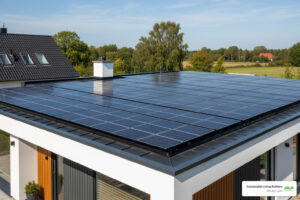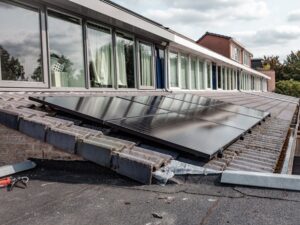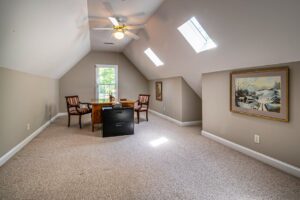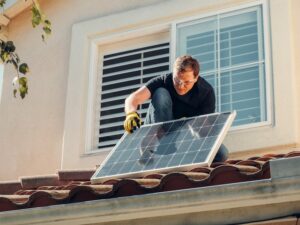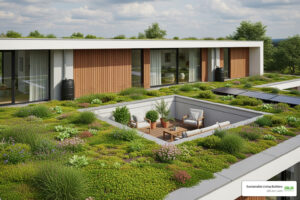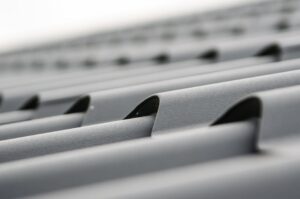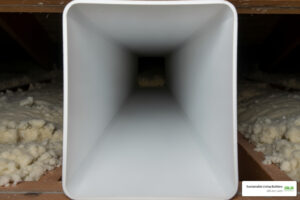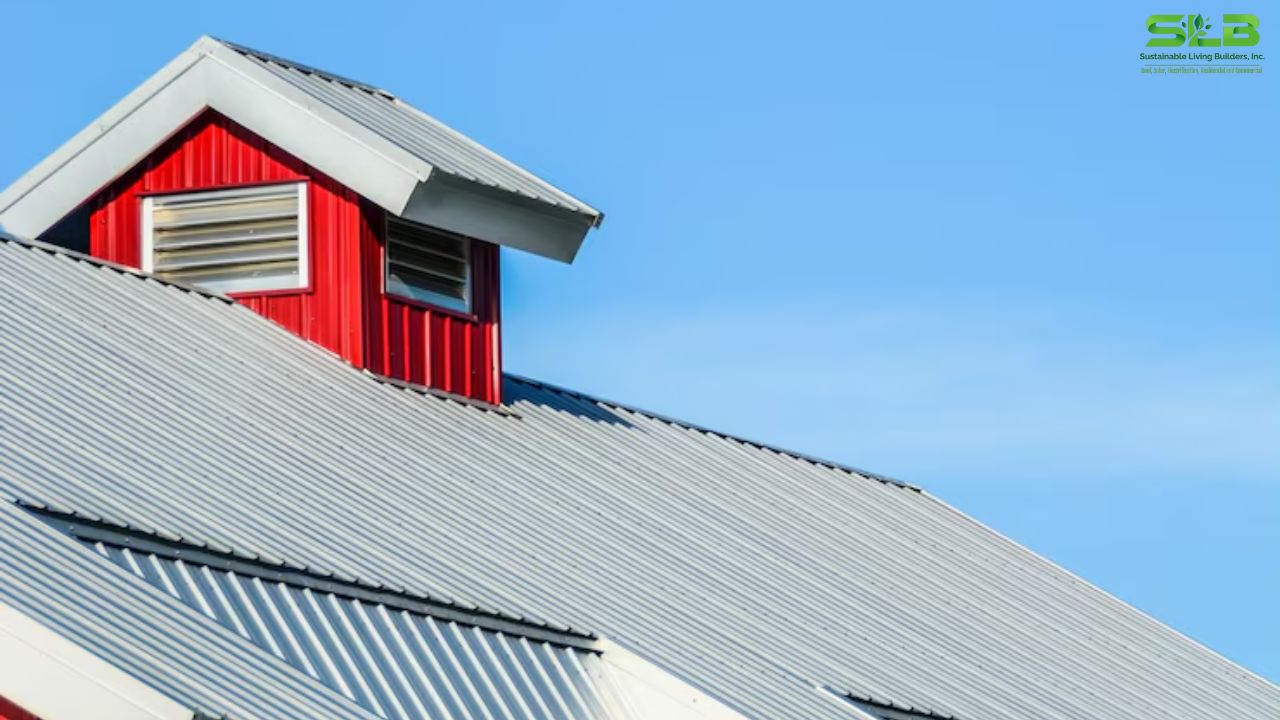
Roofing Materials Explained: Pros, Cons, and Best Uses
Choosing the right roofing material is a critical decision for any homeowner and it’s better when made as suggested by a professional roofing contractor.
Each option among the different types of roofing materials offers a unique blend of durability, aesthetic appeal, cost, and climate compatibility. In this guide, we explore the most common and effective roofing materials used across residential and commercial properties, helping you make an informed decision that proves itself in the long-term.
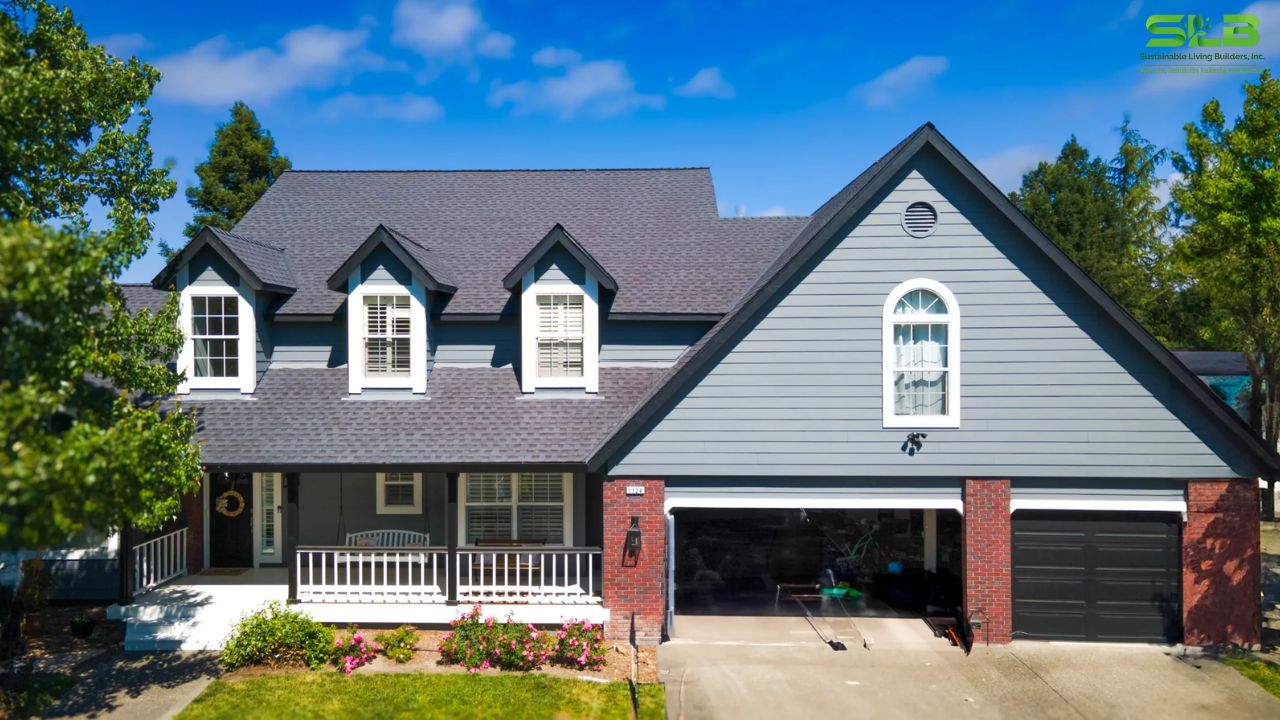
Asphalt Shingles: Affordable and Widely Available
Asphalt shingles dominate the U.S. roofing market due to their low upfront cost and ease of installation. They come in two main types:
- 3-tab shingles: Lightweight and flat, designed to resemble slate
- Architectural shingles: Thicker, more durable, and dimensional in appearance
Pros:
- Budget-friendly
- Easy to replace
- Wide variety of colors and styles to suit your style
- Compatible with most roof shapes
Cons:
- Shorter lifespan (15–30 years)
- Less resistant to high winds and hail. In short, low performance in extreme weather
Asphalt shingles are ideal for moderate climates and residential properties, and remain a top choice for those seeking affordability without having to sacrifice aesthetic appeal. They’re one of the most affordable types of roofing materials.
Metal Roofing: Long-Lasting and Energy Efficient
Metal roofing, available in materials like steel, aluminum, zinc, and copper, has lately gained more popularity for its longevity and reflective properties.
Types include:
- Standing seam metal roofs
- Corrugated metal panels
- Metal shingles
Pros:
- Lifespan of 40–70 years
- Highly resistant to fire, wind, and mildew
- Reflects solar heat, reducing cooling costs
- Lightweight and recyclable, making it eco-friendly
Cons:
- Higher initial cost
- Noisy during heavy rain unless properly insulated
Metal roofs are best suited for modern architecture, mountain cabins, and coastal areas. Metal roofing is ideal where durability and sustainability are prioritized.
Clay and Concrete Tiles: Elegant and Durable
Clay and concrete tiles bring a Mediterranean charm to roofs. Among all the different types of roofing materials that are available, these materials are especially prevalent in hot, arid climates due to their heat resistance.
Clay tiles:
- Traditional curved tiles
- Extremely durable and fade-resistant
Concrete tiles:
- Can mimic clay, wood shakes, or slate
- Heavier but less expensive than clay
Pros:
- Fireproof
- Resistant to rot and insect damage
- Long lifespan (50–100 years)
Cons:
- Very heavy; requires reinforced roofing structure and a strong foundation
- Expensive installation and repair
Both clay and concrete tiles are perfect for Spanish-style homes, historic properties, and regions prone to high temperatures, tile roofs add both visual impact and longevity.
Slate Roofing: Timeless and Resilient
Slate is one of the oldest roofing materials, offering unmatched natural beauty and longevity. Quarried slate tiles are known for their unique texture, color variation, and fire resistance.
Pros:
- Lasts 75–150 years
- Eco-friendly and recyclable
- Resists mold, frost, and fire
Cons:
- Extremely heavy
- High material and labor cost
- Requires expert installation
Ideal for luxury homes, heritage buildings, and areas with variable weather, slate delivers exceptional performance and historic charm.
Wood Shingles and Shakes: Natural and Rustic
Wood roofs offer an earthy, traditional look, often seen in cottages, bungalows, and historic restorations.
Available types include:
- Wood shingles: Machine-cut for a uniform look
- Wood shakes: Hand-split, thicker, and more textured, thus, more rustic
Common woods used:
- Cedar
- Redwood
- Pine
Pros:
- Visually appealing
- Moderate insulation properties
- Ages to a distinguished silver-gray
Cons:
- High maintenance
- Susceptible to fire, insects, and rot without treatment
- Lifespan of 25–30 years
These are strongly recommended only for dry climates, given the qualities of natural wood. Wood roofing is prized for its organic appearance and architectural integrity.
Synthetic Roofing: Advanced and Versatile
Synthetic roofing materials mimic natural ones like slate, wood, or tile, but are made from polymer, rubber, or plastic composites.
Pros:
- Lightweight and impact-resistant
- More affordable than natural counterparts
- UV and fire-resistant
- Easier to install and maintain
Cons:
- Newer on the market; long-term performance still under evaluation
- Not always recyclable
Synthetic roofs are ideal for homeowners seeking the look of premium materials without the weight or price tag. They offer modern innovation with classic aesthetics.
Green Roofs: Eco-Friendly and Innovative
If you’re looking for something unique among the types of roofing materials, green or living roofs consist of a vegetative layer grown on top of a waterproof membrane. Often found in urban environments, they help manage rainwater and regulate indoor temperature.
Pros:
- Excellent insulation
- Improves air quality
- Reduces stormwater runoff
- Increases lifespan of roof membrane
Cons:
- Expensive installation and maintenance
- Structural support required
- Not suited for all roof pitches
Living roofs are perfect for eco-conscious homeowners, commercial buildings, and urban rooftops, green roofs represent a fusion of architecture and nature.
Solar Roofing: Energy-Generating and Sleek
Solar roofing integrates photovoltaic cells directly into the roof surface, blending energy production with modern design.
Types include:
- Solar shingles (solar roof tiles)
- Mounted solar panels (more distinguishable from other parts of your existing roof, and thus, more visible)
Pros:
- Generates clean energy
- Reduces electric bills
- Incentives and tax rebates available
- Lowers carbon footprint
Cons:
- High initial investment
- Works best in sunny climates
- May require backup systems or grid connectivity
Solar roofing is ideal for modern homes in sunbelt states, providing a future-forward solution that combines sustainability and self-sufficiency.
Built-Up Roofing (BUR): Trusted for Flat Roofs
Built-up roofing is a time-tested system for flat and low-slope roofs. It consists of alternating layers of bitumen and reinforcing fabrics, topped with gravel or cap sheets.
Pros:
- Excellent waterproofing
- UV-resistant surface
- Inexpensive for large areas
Cons:
- Heavy
- Longer installation time
- Fumes during application
BUR is best for commercial buildings, industrial facilities, and apartment complexes, BUR provides durability in demanding environments.
EPDM Rubber Roofing: Simple and Effective
EPDM (ethylene propylene diene monomer) is a synthetic rubber membrane that’s widely used in commercial and low-slope residential roofing.
Pros:
- Quick to install
- Lightweight
- Highly UV-resistant and weather-resistant
- Low-cost option for flat roofs
Cons:
- Aesthetically limited (usually black or white)
- Vulnerable to punctures
EPDM is excellent for low-budget commercial roofing and minimalist residential structures.
Choosing the Right Roofing Material
The best roofing material among all the various types of roofing materials depends on several factors:
- Climate and weather exposure
- Architectural style of your home
- Your budget
- Lifespan expectations
- Local building codes relevant to where you live
- Environmental priorities
While asphalt shingles may suit most suburban homes, slate or metal might be better for long-term investment. Each material brings a unique blend of functionality and style to suit different property needs.
Final Thoughts
The roofing industry offers a broad spectrum of materials to meet every need—from cost-effective options like asphalt shingles, to premium solutions such as slate, metal, or solar tiles.
At the core of every high-performing roof is a careful balance of aesthetics, function, and structural compatibility. With this detailed breakdown, homeowners and builders alike are equipped to make confident decisions that ensure both protection and property value for decades to come.
Sustainable Living Builders (Slb Inc.) is a company that supports sustainability through green living solutions, including solar solutions, gutter services, roofing, and more for both residential and commercial buildings.
Offering a free estimate within 48 hours, Slb Inc. offers the best sustainable solutions for residential and commercial projects in the regions of Sonoma, Marin, and Napa counties in California.
Related Articles You May Like
✔️ Why a Solar Roof Tesla Is the Perfect Year-End Upgrade
✔️ Roofing
✔️ Roofing Contractor
✔️ Affordable Roofing Services
✔️ Emergency Roofing: What to Do When Disaster Strikes
MULTIPLE SERVICES, EVEN MORE SUSTAINABLE SOLUTIONS!
If you’re looking for a team of experienced, hard-working, and committed team to take your home or business to a more sustainable future, Sustainable Living Builders, Inc. is here for you! From holistic roofing solutions to innovative solar options, we have many services to help you protect your home and your pocket in a single place. Are you ready to get started?
